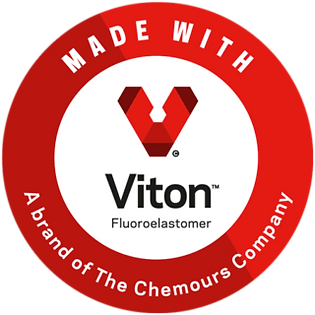Comparing Viton & Aflas: A Deep Dive into High-Performance Elastomers
Updated: Oct 17, 2025
In the world of high-performance elastomers, Viton and Aflas stand out as two of the most robust and chemically resistant materials available. Both have unique characteristics that make them indispensable in various industrial applications. This blog post explores the differences between Viton and Aflas, including the types of Viton, their properties, and common uses.
What is Viton?
Viton is a brand name for a class of fluoropolymer elastomers, primarily composed of vinylidene fluoride and hexafluoropropylene. This synthetic rubber is known for its high resistance to heat, chemicals, and oils. If you would like to learn more about Viton, please visit our Viton Page. The different types of Viton include:

- Viton A: The most common type, used widely due to its excellent resistance to oils and various chemicals.
- Viton B: Offers better resistance to acids and other fluids that can degrade standard fluoroelastomers.
- Viton F: Provides superior resistance to oxygenated automotive fuels and concentrated aqueous inorganic acids, making it ideal for specific applications.
- Viton Extreme (ETP): Designed for extreme chemical environments, including exposure to acids, bases, and other aggressive chemicals.
- Specialty Types: These include GLT, GFLT, XLT, and Viton Extreme, each tailored for specific extreme conditions such as low temperatures or very aggressive fluids.
What is Aflas?

Aflas is a trade name for tetrafluoroethylene-propylene copolymer, another type of fluoroelastomer. Unlike Viton, Aflas is exceptionally resistant to bases and amines and has excellent electrical properties. However, it generally has lower resistance to petroleum oils and aromatic hydrocarbons when compared to Viton. If you would like to learn more, please visit our Aflas Page.
Key Properties and Industrial Uses
Viton:
- Properties: Exceptional resistance to heat (up to 225°C), chemicals, and aging. Offers excellent mechanical properties and is less likely to deform under stress.
- Uses: Commonly used in automotive and aerospace industries for fuel system seals, O-rings, and gaskets. It is also prevalent in chemical processing for hoses, tubing, and seals that require high chemical and temperature resistance.
Aflas:
- Properties: Exceptional resistance to heat (up to 235°C) and excellent resistance to strong bases, steam, and various chemicals. Offers good electrical properties.
- Uses: Widely used in the oil and gas industry for seals and gaskets exposed to sour gas and high alkaline environments. Also used in electrical applications where high insulation properties are needed.
Comparing Viton and Aflas
- Chemical Resistance: Viton offers broader resistance to oils and aromatic hydrocarbons, while Aflas excels in environments with strong bases and amines.
- Thermal Stability: Depending on the type, Viton generally supports higher range of temperatures than Aflas, making it suitable for applications involving high variability in temperature.
- Cost and Availability: Viton is widely available and comes in several grades suited to different environments, which can affect its cost. Aflas, being more specialized, might be preferred in applications requiring unique c
hemical resistances but can be more expensive.
Conclusion
Both Viton and Aflas have their strengths and specific applications where they perform best. Choosing between them depends on the specific environmental conditions and chemical exposures they will face. Engineers and designers often decide based on the specific requirements of the application, balancing cost, performance, and longevity.
For any application involving harsh chemicals or extreme temperatures, it's crucial to consider these elastomers' properties to ensure the durability and efficiency of your components.
Sources:
- DuPont Performance Elastomers. "Viton High-Performance Fluoroelastomers."
- Asahi Glass Co., Ltd. "Aflas High-Performance Elastomers."


